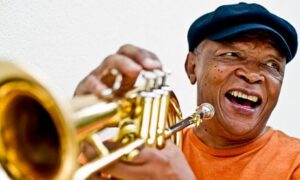 I was listening recently to the re-run of an interview on ABC Radio National that took place a few years ago with the great South African trumpeter, composer, and activist, Hugh Masekela. In it, he was speaking about leaving South Africa a few months after the Sharpeville Massacre in 1960 and not returning for sixteen years. He spoke about feeling more intensely South African in the years he lived away from his home than when he did on return.
I was listening recently to the re-run of an interview on ABC Radio National that took place a few years ago with the great South African trumpeter, composer, and activist, Hugh Masekela. In it, he was speaking about leaving South Africa a few months after the Sharpeville Massacre in 1960 and not returning for sixteen years. He spoke about feeling more intensely South African in the years he lived away from his home than when he did on return.
Even though my situation is very different, that sense of feeling my Australian-ness acutely while living in the US is similar.
And now I’m back in Australia for a while and I feel attuned to the land, knowing the contours of the sand dunes leading to the beach, listening to the choraling of Australian birds.

In the car, I tune into Philip Adams, Late Night Live, Rachael Kohn, The Spirit of Things, Dr. Norman Swan, Health Report, Andrew Ford, The Music Show and Claire Nichols, the Book Hub. Long drives. Magpies. Kangaroos. Dogs bounding into the sea. Older women soaking in the sea – up to their sunhats, long conversations, slowdown sea time.
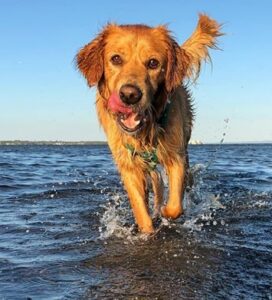
Reading Helen Garner’s stories and re-reading Elizabeth Jolley, Woman in a Lampshade. On holiday weekends, there’s the crimson capped marathon swimmers, the more serene stand-up paddlers, the kite flyers, the kayakers, the sails and the motorboats specs in the distance, the bodysurfers and the kids being pulled along on surfboards.
While I’m in the sea, a shaggy golden retriever called Elvis dog- paddles up to me in the water, looking very much like his shambolic owner, also in the water. All Elvis needs are those dark shades and we could be rockin’ it together to some groovy tune. Elvis gives me a daggy grin and then, with a waggy swish of his tail, he’s off again to find another swimmer.
My prime reason for being in Australia is because of family. My dad is very sick and I’m fortunate to be able to work from here for a while. As a result, I’ve been immersed in the world of those needing care –those who are old, sick, and/or have a disability.
My family learns about a new in-home support service created by three guys in Brisbane called Five Good Friends. The name refers to research conducted by the American, Dan Buettner, that identifies communities that have Blue Zones, where people live longer due to their connections with friends. Optimum quality of later life revolves around having a lifelong close circle of five core friends.
What’s different about this model is that it’s flexible and people-centered. Instead of my parents having to go through a central facility managed by coordinators they never see, with Five Good Friends, the coordinator sits down with them to discuss their needs, tailors the arrangements and then they can make and change arrangements directly with the people who provide their care.
There’s also an app to track and change appointments, although those being cared for don’t have to use it. However, other members of the family can have access to the app so we can track changes in the care being provided and the costs. With Five Good Friends, the coordinator works from home rather than from a central office and people work as independent contractors, so they also have the flexibility of hours to suit their needs. With this approach, the company can keep overheads low and thus keep costs manageable for those needing care.
Rebecca Perry, the coordinator for South Australia, tells me “I am a dietitian and have been drawn to this sector after my father experienced a spinal cord injury 5 years ago. He is now an incomplete quadriplegic and needs to use a wheelchair so has complex care needs. I learnt about how well Five Good Friends operates so I’m delighted that I can be part of the team.”
Five Good Friends is the brainchild of Tim Russell, the founder of RetireAustralia, and his two school friends and founders of successful tech startup everydayhero, Simon Lockyer and Nathan Betteridge.
Russell resigned the CEO role at RetireAustralia in May 2015 and was joined by Simon and Nathan to establish Five Good Friends. They secured external funding and have taken the service to the wider market. Now, in addition to in-home support, the company is signing on partnerships with other providers to ensure a suite of in-home services including nutrition, physiotherapy and occupational therapy.
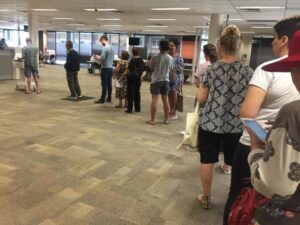 I can see the possibilities for this service to go even further. Taking my parents to Centrelink, and seeing people line up in wheelchairs, with limited mobility, very frail, very sick, with mental illness, to do things like sign up for disability allowance or carer’s allowance, how much easier it would be for home providers like Five Good Friends to be registered to do identity checks and provide assistance so that people are helped in their homes or local communities.
I can see the possibilities for this service to go even further. Taking my parents to Centrelink, and seeing people line up in wheelchairs, with limited mobility, very frail, very sick, with mental illness, to do things like sign up for disability allowance or carer’s allowance, how much easier it would be for home providers like Five Good Friends to be registered to do identity checks and provide assistance so that people are helped in their homes or local communities.
In San Francisco and Sydney and many cities around the world, whether it’s Airbnb, Uber, Lyft, UberEats, WeWork, is changing the way we access goods and services and the way we work. Now with Airbnb, the experiences it’s offering to people means it’s positioning itself as an experiential company rather than an accommodation provider. Similarly, Five Good Friends, and other services like it, will likely be positioned as resilience and well-being companies supporting people to live fully and to age well with the wrap round services and experiences to make this possible.
The way people are interacting with the sharing economy means that services adapt quickly to meet innovations recommended or crowdsourced by users. The downside is that, at least from what I’ve observed in San Francisco, the sharing economy follows the market and that often results in widening inequality and polarizing poverty. Regulation is thus also key to support innovation while ensuring policies are in place to address inequity.
In Asia, the region’s elderly population is projected to reach nearly 923 million by the middle of this century. This means the region is on track in the next few decades to become one of the oldest demographics in the world.
Most governments in Asia are not well prepared for this vast change and the dramatic social and economic consequences that will flow from this trend. In China, according to the United Nations, the population is ageing more rapidly than almost any other country. Exacerbating this situation is the impact of the One Child Policy in China resulting in ageing parents no longer able to rely on the care and support of their children, governments and populations are having to confront the reality of the situation.
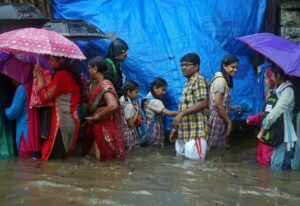 Add to this the effects of climate change including rising sea levels, exposure to more disease, more frequent natural disasters, increased temperatures and what this will mean for people who are vulnerable, frail, isolated, have mobility issues, and different forms of disabilities especially hidden disabilities. Many countries are ill-equipped with physical and social infrastructure as much as regulatory environment and a well-developed civil society geared to advocating for change and addressing these issues.
Add to this the effects of climate change including rising sea levels, exposure to more disease, more frequent natural disasters, increased temperatures and what this will mean for people who are vulnerable, frail, isolated, have mobility issues, and different forms of disabilities especially hidden disabilities. Many countries are ill-equipped with physical and social infrastructure as much as regulatory environment and a well-developed civil society geared to advocating for change and addressing these issues.
The work we’ve done at The Asia Foundation is important – including a program called A Fully Abled Nation in the Philippines, established in 2011 initially to create more accessible polling places for upcoming elections and to promote voter rights in the disability sector. It was so successful that it became a major program involving government and civil society to promote the participation of persons with disabilities in electoral and democratic processes.
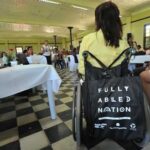 In Indonesia, the work we’re doing supports people with disabilities to participate in development planning from village level to district level and to assume leadership roles.
In Indonesia, the work we’re doing supports people with disabilities to participate in development planning from village level to district level and to assume leadership roles.
This work is vital, especially with the rapid migration to cities, the massive traffic congestion and air pollution issues, all of which will massively increase the challenges for people with disabilities, who are elderly and/or marginalized.
 Here in Adelaide, it’s been so hot and a friend from San Francisco emails me – “not much rain. Very mild.” Climate change is hitting hard. In fact, 2017 was the third hottest year on record in the US and it was also the year that cost the US the most ever with a $300 billion damage bill for hurricanes, forest fires, drought, and flooding. In South Australia, where my family live, the predictions are for the state to get hotter and drier with an increase in drought and fire-related conditions in the years ahead.
Here in Adelaide, it’s been so hot and a friend from San Francisco emails me – “not much rain. Very mild.” Climate change is hitting hard. In fact, 2017 was the third hottest year on record in the US and it was also the year that cost the US the most ever with a $300 billion damage bill for hurricanes, forest fires, drought, and flooding. In South Australia, where my family live, the predictions are for the state to get hotter and drier with an increase in drought and fire-related conditions in the years ahead.
Perhaps that’s why I turn ever more frequently to the sea and the ocean. Tonight, the sun setting over the sea was achingly beautiful. A deep crimson pinwheel spinning out above the water, gaining color and momentum until it filled the sky.
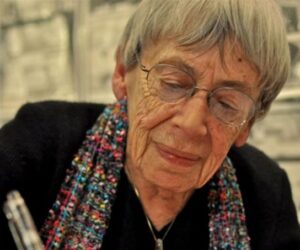 Even the books I’m reading mainly have a water/sea theme. My Life Underwater, Turning: A Swimming Memoir; Swimming Lessons by Claire Fuller; Swimming with Seals by Victoria Whitworth and Land’s Edge: A Coastal Memoir by Tim Winton and two non-water themed reads – An American Marriage by Tayari Jones and Earthsea by the irreplaceable Ursula Le Guin.
Even the books I’m reading mainly have a water/sea theme. My Life Underwater, Turning: A Swimming Memoir; Swimming Lessons by Claire Fuller; Swimming with Seals by Victoria Whitworth and Land’s Edge: A Coastal Memoir by Tim Winton and two non-water themed reads – An American Marriage by Tayari Jones and Earthsea by the irreplaceable Ursula Le Guin.
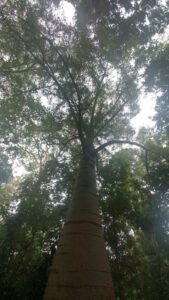 For me right now, I’m seeking creative time –for silence, swimming, spirit life, crayoning, dancing – away from noise and frenetic activity. I also visit my favorite tree – a bottle tree – that I’ve been spending time within the Botanic Gardens for over a decade. Back on my sea perch I watch two girls running across the sand with their dog and their parents behind them I think about the different world other girls are experiencing.
For me right now, I’m seeking creative time –for silence, swimming, spirit life, crayoning, dancing – away from noise and frenetic activity. I also visit my favorite tree – a bottle tree – that I’ve been spending time within the Botanic Gardens for over a decade. Back on my sea perch I watch two girls running across the sand with their dog and their parents behind them I think about the different world other girls are experiencing.
Last month in San Francisco at a Lotus Leadership Dinner we honored a girl group from Myanmar called the Colorful Girls. I was introduced to this group when I first visited Myanmar almost six years ago, and I wrote about the visit in my blog at that time.
When I commenced work at The Asia Foundation I asked if we were supporting the Colorful Girls in Myanmar and I learnt that we were, so I could nominate them for a leadership award.
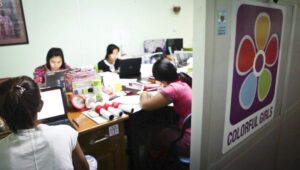
Colorful Girls is a grassroots organization in Myanmar that’s supporting adolescent girls and young women to gain confidence and leadership skills to prevent violence and trafficking and to advocate for their rights. The organization has supported several thousand girls across the country over the last decade to gain confidence and connections through the programs it offers to girls from diverse cultures, ethnicities and geographies.
Importantly, girls are supported to speak out rather than feel compelled to be docile and quiet and in need of protection. By claiming their voice, girls are also more likely to speak out against abuse rather than stay quiet and be rewarded for enduring the abuse.
Zar Chi Win and Ji Mai are two members of Colorful Girls who are speaking out and sparking change.
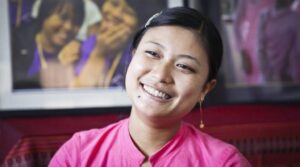
Zar Chi Win shares her story. “I joined Colorful Girls in 2011 when I was in 7th grade. At 14, I started working in the garment factory near my home during the summer, when school is out of session. In these factories, most workers are girls and young women. A lot of girls like me—some even younger—work in garment factories. In my factory most of the girls were below the legal age. In that work environment, the most common problem girls face is sexual harassment. I have experienced it myself. My supervisor harassed me, and when I responded to him by shouting back I was fired.
Zar Chi Win was one of the girls who attended a series of workshops we held in Yangon and Mandalay to teach the girls how to organize and mobilize a campaign for social change. She subsequently launched a campaign to combat harassment on public buses alongside other young advocates They gave out whistles to women and girls to blow when they were being harassed. They spoke to bus conductors and fare collectors to get their support and to help anyone who was being harassed.
As Zar Chi Win said, “From that campaign, I learned that we girls can speak out. We can do anything! Now as a Colorful Girls facilitator, I get the opportunity to help other girls become leaders.”
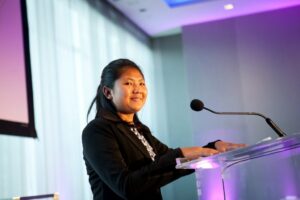
Ji Mai’s pathway to joining Colorful Girls was very different, as she shares. “In 2012 I was preparing for my 6th grade exam at age 12, when war broke out in our surrounding villages. After fleeing the shelling and searching for a safe place for several months, we finally made our way to a camp for the internally-displaced (IDP) near the state capital of Myiktyina, Kachin State. I have now been living in this camp for over five years. I joined Colorful Girls in 2014. For girls like us living in IDP camps, we experience discrimination at school: the school divides us war-victims from the students of the host community into separate classrooms, with poorer facilities. This reminds us every day of our low status. Daily survival is difficult for all of us. Some of the girls from my camp drop out of school to search for any possible paid work. During this process they will be exploited; some even become the victims of human trafficking.”
“Some of my fellow girls have little hope, and can’t see any better options, so they will get married while still very young. Due to the living conditions and problems that we face, we have a lot of stress and anxiety. But, when I play sports, it helps me manage and reduce my stress. I get happy while playing sports. It has truly become an outlet for me. Now I coach volleyball for the Colorful Girls. I teach girls from different IDP camps. To meet them, to know them, to do what I am good at, makes me proud, and them hopeful. For all of us who experience trauma and ongoing gender discrimination, playing volleyball together is taking action. We can relieve our stress, learn real teamwork, and gain leadership skills. Confidence and hope are critical for us to take the lead in our own lives and make progress for all girls. “
By mobilizing to confront abuse and violence and using sport to build understanding between different ethnic groups, these girls are actively building cultures of peace and resilience and reshaping the way girls are seen in Myanmar.
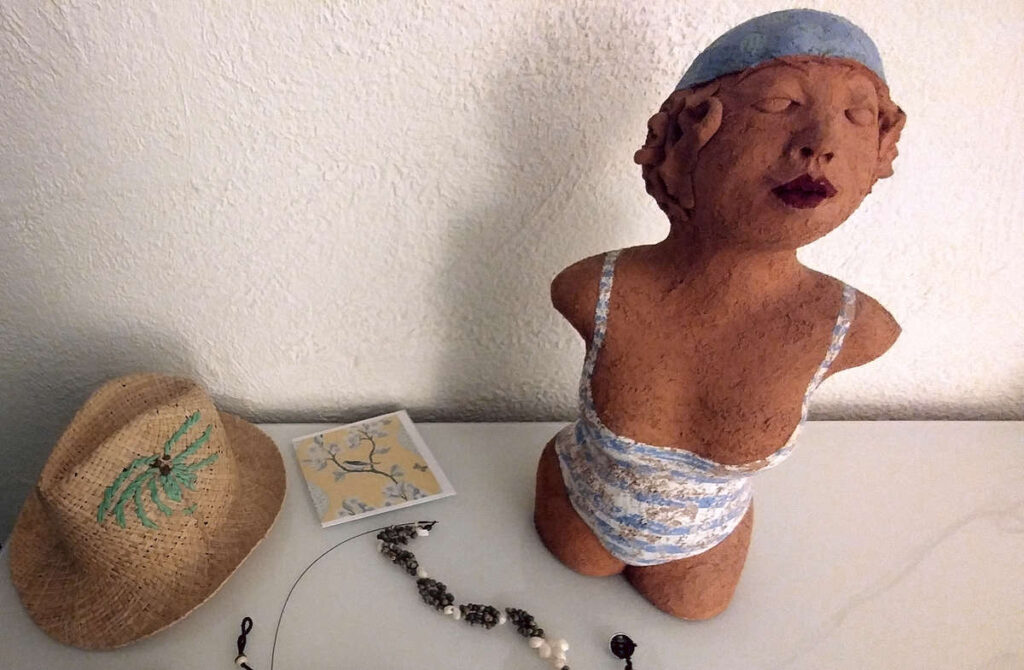 Back here in Adelaide, I visit Freya Povey, a friend and nationally renowned ceramicist who gave me the lessons in clay making that I wrote about in my book. Freya hands me a bust of a swimmer, resplendent in a dreamy blue bathing cap, a blue and white striped bathing suit and very red lips. I call her Bessie. I can’t stop looking at her.
Back here in Adelaide, I visit Freya Povey, a friend and nationally renowned ceramicist who gave me the lessons in clay making that I wrote about in my book. Freya hands me a bust of a swimmer, resplendent in a dreamy blue bathing cap, a blue and white striped bathing suit and very red lips. I call her Bessie. I can’t stop looking at her.
There’s often an essential self to which we return, as a touchstone for our lives when so much is evolving and in flux. For me, it’s swimming in the sea. This morning, cool and delicious, I run to the sea and plunge in, a small daily act of fearlessness (“aren’t you scared of sharks?”) that makes me feel alive and with a renewed sense of hope.
That night a big round lemony moon hangs low in the sky and early next morning, as I’m paddling in the sea, horses thunder by, their hoofs half in the water, half on the shore, spraying water on me. There’s magic afoot.
Jane Sloane
Adelaide 2018
3 Responses
hello!! any chance of a melbourne visit dear friend
So sorry about your dad Jane – lovely letter as usual – I am off to NY Saturday or I would do my best to get to see you – won’t be going to San Fran after all
love and hug
G’day Jane, glad you are home for a while but understand the circumstances. Thanks for the wonderful writing. Like a good bottle of Barossa shiraz you just get better a s the years go by.
Chers, Tony